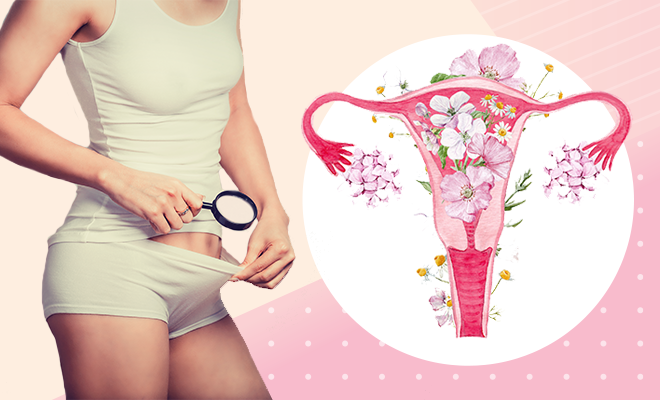Cervical Cancer Awareness Month: Symptoms, Causes, Treatment, Everything You Need To Know About It

Women’s sexual health is a lesser talked about topic and it has been for a very long time. Even women shy away from talking about their sexual and reproductive health due to the feelings of shame attached to it but this month, January is all about our health. More importantly, it’s about our cervix and cervical cancer. Every year, January is observed as the Cervical Cancer Awareness Month. But most of us don’t know or talk enough about it. And it is important to get the conversation about it going. According to the World Health Organisation, the second most common cause of cancer death in reproductive-aged women across the world is cervical cancer and it’s the fourth most common cancer in women. Research suggests that every year over 3,00,000 women die from this cancer. So, it’s time we start talking about it and sharing knowledge. Here’s everything you need to know about it.
What Is Cervical Cancer?
The entrance to the uterus from the vagina is known as the cervix. Cervical cancer develops in the cervix when the cells in our body begin to grow out of control. This cancer not only affects the cervix but also the entrance of a woman’s uterus/womb. In most cases, cervical cancer is linked to HPV aka high-risk papillomavirus which is commonly transmitted through sexual contact. While this infection is resolved easily and has no symptoms, if not resolved it can lead to cervical cancer in women.
What Is Cervical Cancer Awareness Month?
As I mentioned earlier, January is celebrated as the cervical cancer awareness month every year. Represented by a teal ribbon, the cervical cancer awareness month is aimed at spreading awareness about this disease.
Early Signs And Symptoms
Spotting the sign and symptoms early gives you the chance to have it treated in time. Since HPV causes cancer in most cases, it’s essential to understand that it takes from 15 to 20 years from contracting the infection to developing cancer which in turn gives women a long time to get diagnosed and treated. It also gives us women a chance to work on prevention. So, here are some common symptoms of cervical cancer to keep an eye out for.
Early Signs
– Bleeding during sexual intercourse
– Light bleeding or spotting between or after periods,
– Increased vaginal discharge
– Pain during sexual intercourse
– Vaginal Mass
– Post-menopausal bleeding
– Irregular periods
– Blood or strong odour in vaginal discharge
– Itching or burning sensation in and around the vagina
Advanced Symptoms
– Weight loss
– Persistent and unexplained pelvic or back pain
– Abdominal bloating
– Fatigue
– Heavy vaginal bleeding
– Loss of appetite
– Leg pain or swelling
– Frequent urination
– Leakage of urine or faeces from the vagina
– Bleeding after douching or pelvic exam
Causes
While all causes of cervical cancer are not known, a lot of contributing factors have been listed. The biggest cause of cervical cancer is HPV and smoking. HIV/AIDS is also another factor. Smoking increased the risk of contracting it. Another contributing cause is the long-term usage of oral contraceptives. Having multiple pregnancies also puts women at risk of contracting this disease.
Can One Contract It Non-Sexually?
In most cases, the transmission happens sexually through the skin to skin contact of the genital area but yes, one can also contract it in a non-sexual way. Lack of hygiene, long-term use of contraceptives, tobacco and other such things can also lead to this type of cancer as mentioned above.
Treatment
Cervical cancer has been known as first cancer ever that can be eliminated. This cancer can be prevented as well as treated. There are numerous treatments and medications to treat this cancer.
Also Read: HPV Vaccine Reduces The Risk Of Developing Cervical Cancer By 90%, Says Study
Prevention Tips And Lifestyle Modifications To Reduce The Risk Of Cervical Cancer
Cervical cancer is known to be ‘highly preventable’. Research suggests that the HPV vaccine can reduce the risk of cervical cancer in women by nearly 90%. Screening for precursor lesions, pap smear tests can help diagnose this disease on time which in turn makes treatment easier. Apart from this, some simple lifestyle changes can help in reducing the risk of contracting it. So, in order to make it easier for all of you, we’ve listed all the lifestyle modifications that can help reduce the risk.
– Dietary changes
– Increased intake of Vitamin A, B12, C, E and beta-Carotene
– Consume more fruits and vegetables
– Make exercise a part of your daily routine
– HPV screening
– Regular pap smear after 30 years of age
– Sexual healthcare
– Genital hygiene
– Quit smoking (active and passive)
– HPV vaccination between the age of 9 to 15 years
– Avoid long-term usage of hormonal oral contraceptive
Apart from these things, it’s a good idea to follow safe sex practices, use condoms and limit the number of sex partners. Regularly get tested for sexually transmitted diseases and cancer. Taking care of your sexual health is a great way to begin.
6 Sexual Health Resolutions That Everyone Needs To Make In 2022
8 Most Googled Questions About Sex And Sexual Health, Answered




















